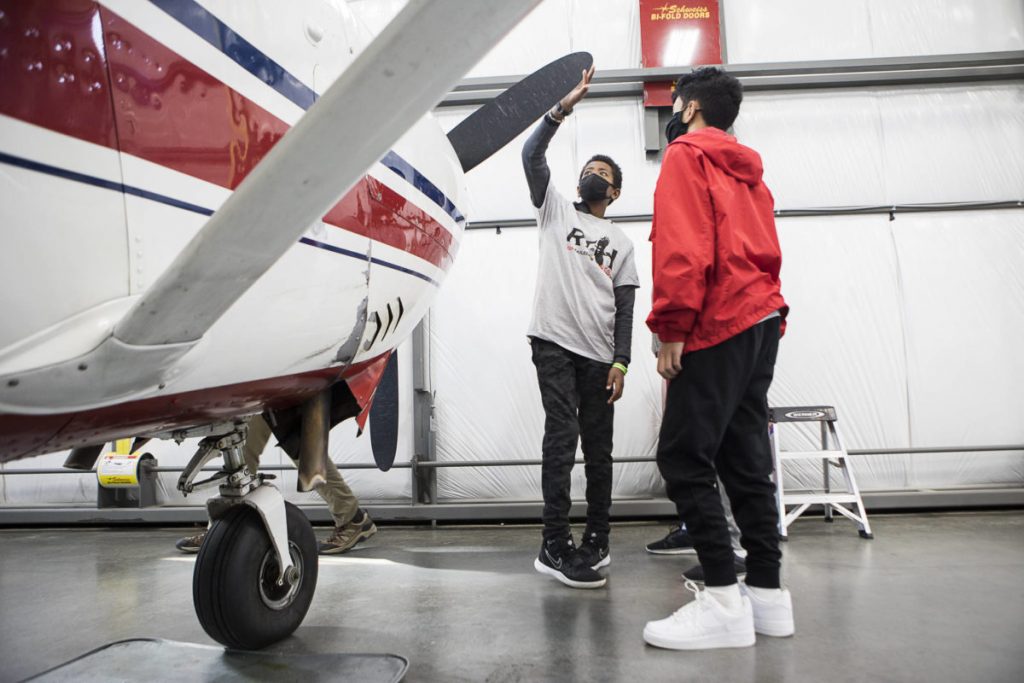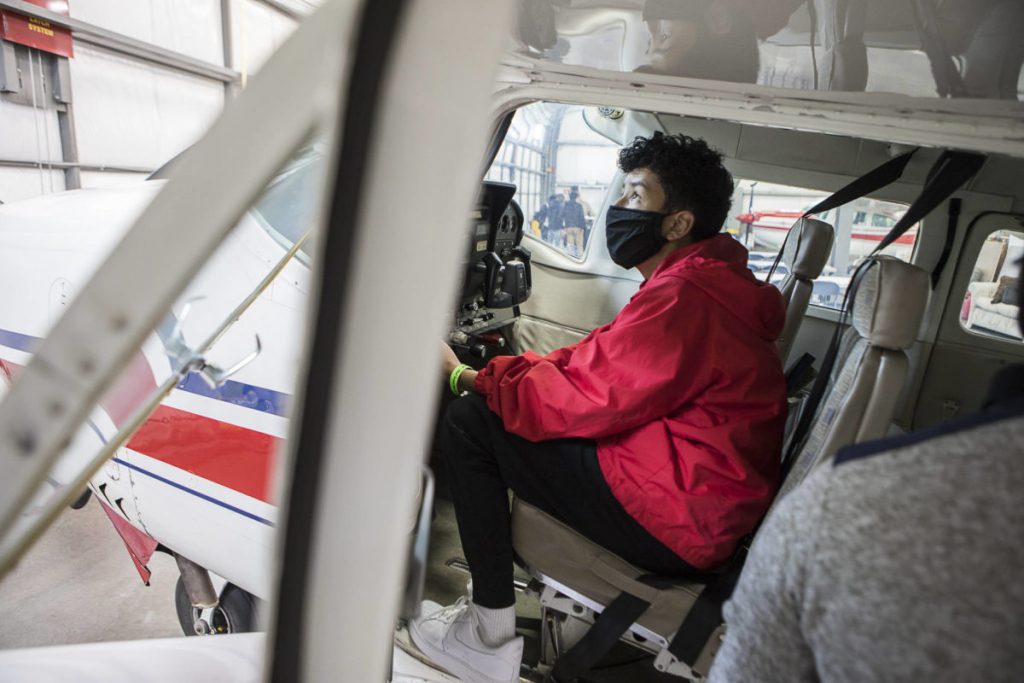- By Janice Podsada
- Tuesday, July 6, 2021 5:10pm
- HERALD BUSINESS JOURNALLOCAL NEWSARLINGTONAVIATION AND SPACEEVERETTMUKILTEOPAINE FIELD
- https://www.heraldnet.com/business/a-mukilteo-aviation-club-helps-youth-of-all-colors-aim-high/

MUKILTEO — For as long as he can remember, Spencer Brashears wanted to be a pilot. As a toddler, he pointed to airplanes in the sky. One of his first books? An encyclopedia of aircraft. “I was barely talking, but I could tell you every make and model of every airliner and every military plane,” said Brashears, who grew up in Seattle.
Now a flight instructor in Raleigh, North Carolina, Brashears recently began pilot training with an airline.
But his journey to the cockpit hasn’t always been smooth.
“Even now, I still meet people who’ll say, ‘You’re a pilot? I didn’t know Black people can do that,’” said Brashears, who is African American.
Until World War II, Blacks weren’t allowed to serve as pilots in the military. It took another 20 years and a U.S. Supreme Court ruling in 1963 for Marlon Green, a former Air Force pilot, to pave the way for the first Black pilot to be hired by a major commercial airline.ADVERTISEMENThttps://imasdk.googleapis.com/js/core/bridge3.470.1_en.html#goog_53547645Volume 0%
Today, just 3.4% of commercial pilots in the U.S. are Black, according to the U.S. Bureau of Labor Statistics.
A Snohomish County group hopes to increase the percentage.

The Red-Tailed Hawks Flying Club, based in Mukilteo, introduces underserved youth — Blacks, women and people of color — to aviation, science, and aerospace careers.
“Right now, Blacks are under-represented in aviation. Women are under-represented,” said Jesse D. Hayes IV, an Air Force veteran and Boeing engineer who founded the club in 2013 as a way to reach a broader group of kids.
It encouraged Brashears, 26, one of the club’s first members, to pursue his passion.
Jackson Ishida, 13, runs through a preflight check during a Red-Tailed Hawks Flying Club program at Arlington Municipal Airport. (Olivia Vanni / The Herald)
The Red-Tailed Hawks is chartered by the Black Pilots of America. In 1968, Hayes’ father helped found a sister group, the Bronze Eagles Flying Club of Texas. “I grew up around pilots and so now I’m continuing the legacy,” Hayes said.
The club takes its name from the raptor but also alludes to the Tuskegee Airmen, a group of Black U.S. military pilots that fought in World War II. The P-51 Mustang fighter aircraft they flew during combat missions were distinguished by the red markings on the tails, earning them the “Red Tails” nickname. In a racially fraught era, the highly decorated Tuskegee Airmen earned the praise of fellow service members and military leaders.
The club’s youth program targets sixth- through 12th-graders. “Our goal is to grab them in middle school and hold onto them for life,” Hayes said. Hayes and a network of some 50 adults, including commercial pilots and engineers, promote the club at schools, churches, and youth groups.
Today, some of its first members are making their mark.
“Our first girl got her private pilot’s license in 2017 and graduated from Embry-Riddle Aeronautical University with an aerospace degree. Our first boy is flying for Republic Airways,” Hayes said proudly.
The coming shortage
The aerospace industry is facing a shortage of pilots, aircraft mechanics, and engineers. Although the COVID-19 pandemic caused a severe downturn throughout the aviation industry, air travel is now on the upswing, and demand for skilled workers is also rising. Some experts contend the coming shortage will be even more acute because many pilots took early retirement at the request of their employers during the pandemic.
